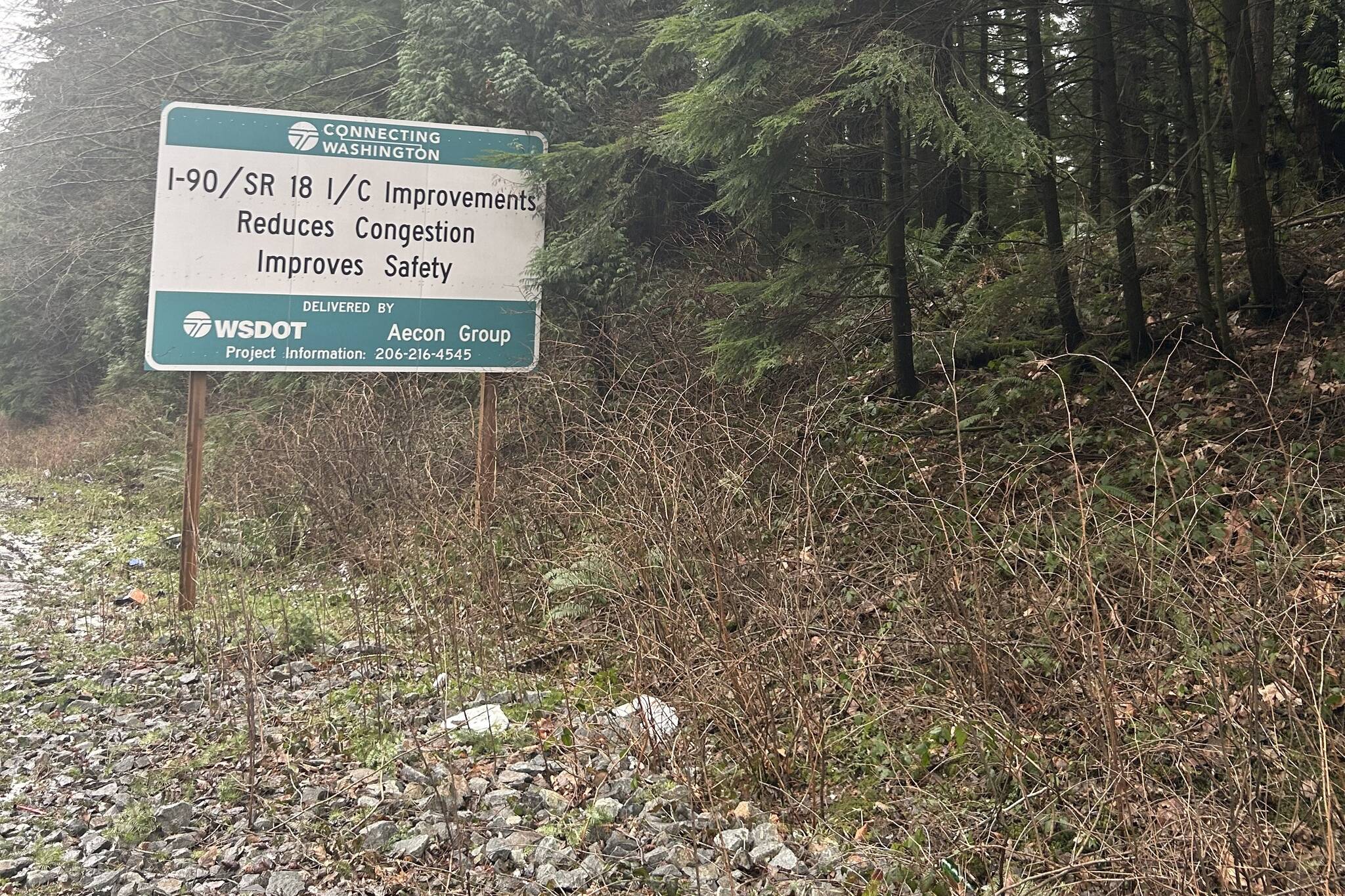As construction on the State Route 18/Interstate 90 interchange project reaches the expected finish line in 2025, there’s another piece to the puzzle.
During interchange construction, traffic often builds up or closures occur, causing a ripple effect extending throughout the surrounding region and impacting over 4,000 commuters daily.
The congestion also impacts freight travel through the SR-18 and I-90 corridors from Eastern Washington to the Port of Seattle and Tacoma, leading to challenges extending beyond King County, said Reagan Dunn, vice chairman of the King County Council, whose district includes the Enumclaw area. The Snoqualmie Valley Record reported that freight trucks make up 20% of traffic through both corridors.
“That area is a significant bottleneck, not just for commuters to and from work, but also for the state’s economic vitality,” Dunn said.
Due to this strain, Dunn sent a letter to WSDOT on Dec. 22, recommending an interagency task force before vital SR 18 and I-90 projects begin.
“With the concurrent construction schedules for these two projects, we want to ensure that a robust coordinated traffic management plan is in place in order to minimize the impact to both freight traffic to the Ports of Seattle and Tacoma, and to commuter traffic throughout the region,” Dunn wrote in the letter.
Ultimately, Dunn said the task force would bring a mix of experts to the table to provide feedback to mitigate traffic congestion during construction. Experts within the task force would include traffic engineer experts, elected officials, key community leaders, and transportation planners.
Surrounding city and regional leaders have long expressed the importance and appreciation for the SR-18/I-90 interchange project. However, the project has underscored the need to bridge a communication gap between stakeholders and the Washington State Department of Transportation (WSDOT) for future projects.
“I think it’s better to have a broad representation to determine things like, how the cities can work in concert with what WSDOT is doing,” Dunn said.
Dunn joined with mayors from the cities of Issaquah, Snoqualmie, Maple Valley, Covington, Black Diamond and Kent; the Snoqualmie Tribal Chairman; the Puget Sound Regional Fire Authority fire chief; and the executive directors of the Black Diamond, Covington and SnoValley chambers of commerce, who all signed the letter.
Stuck trucks
The idea of a task force was sparked when Issaquah began to encounter an unexpected rise in traffic congestion — an issue Issaquah was already tackling before the SR-18/I-90 interchange project started — along with off-route freight trucks passing through the city roads, and in some cases becoming stuck.
In three months, five reported freight trucks have become stuck within Issaquah city limits, said Paul Fairbanks, a traffic sergeant for the Issaquah Police Department. However, he said this figure does not capture unreported freights passing through.
“We don’t get notifications all the time from WSDOT when they close [SR] 18,” Fairbanks said. “So, when we don’t have that, we can’t get signs out.”
Fairbanks said this causes an increase in accidents throughout the city, and the evening commute becomes twice as bad for the duration of the closure — and some time afterward.
Dunn said some aspects the task force can help with include an organized mailing of mass official and unofficial letters to citizens in the region regarding construction periods; providing insight to WSDOT about the challenges cities, commuters or the ports might be having; and identifying the best way to communicate to drivers on the reader boards.
“These localized task forces add force to communication going out into the community,” he said. “And things can change week to week based on where they are in their construction schedule. That’s where a task force could be helpful.”
A meeting about the task force between stakeholders, including local elected officials, tribal councilmembers, community leaders, business owners and WSDOT, is expected to occur in March, according to WSDOT.
About the project
The SR 18/I-90 interchange project will build a diverging diamond interchange. WSDOT said this type of interchange will reduce the number of traffic lights and drop the number of conflict points between vehicles from 26 to 14. According to WSDOT, that means up to a 15% reduction in crashes and a 36% reduction in fatalities.
Further, construction will expand the highway by one additional lane in each direction for two miles south of the interchange. Combined with the Issaquah-Hobart Road to Deep Creek Expansion that received funding this past year, the entirety of SR 18 will eventually have two lanes in both directions.
The majority of the $188 million project was funded through by the state’s gas tax, while $5 million was contributed from the state’s 2015 Connecting Washington transportation package.
Construction on the remainder of the highway, as part of the $640 million Issaquah-Hobart Road to Deep Creek Expansion Project, is expected to begin, at the earliest, in 2025. If WSDOT meets its earliest projections, the entire highway could be four lanes wide by 2029.


